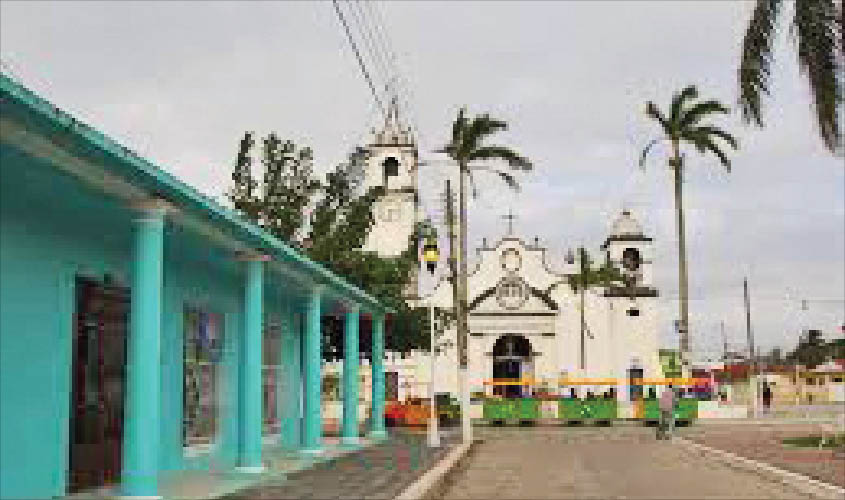Neighbours of the American families murdered in northern Mexico this week worry the massacre will spell the end for two villages that have grown to rely on one another since breakaway Mormons set up home in the isolated hills decades ago.
Unknown gunmen killed three mothers and six children from families with Mormon roots and US-Mexican dual citizenship on Monday, in an attack that spread outrage in both countries and increased US pressure on Mexico to rein in drug cartels.
All the victims lived in La Mora, a cluster of suburban-style homes settled more than 70 years back by a breakaway Mormon sect from the United States on land 56 miles (90 km) south of the US-Mexico border at Arizona.
A short walk away, the hamlet of San Miguelito was founded in the 1600s by Jesuit missionaries. The lives of its current residents are deeply entwined with the ranch life of La Mora, which provides work in a region with few opportunities.
“If they go, we’re going to become a ghost town,” said Erika Enriquez, 32.
“The bit of income that we have from them helps, but without it, only God knows,” said Enriquez, whose husband works for the Mormon families tending livestock and cultivating pomegranates and chili peppers.
The potential for economic ruin in the isolated hill town in Sonora state illustrates the wide-reaching effects of Mexico’s escalating drug war, which has forced thousands of people from homes in border regions over the past decade. Although the American families’ attachment to Mexico runs deep and they are unlikely to uproot from one day to the next, some say they were spending more time north of the border to escape Mexico’s violence even before this week’s killings.
One resident of La Mora, Lafe Langford, said he had been staying more in Louisiana because, at this time, he did not feel comfortable taking his seven children to live in Mexico permanently. But he said he hoped to be able to do so one day.
“As of right now, my desire is to take my children and raise them there, but right now I cannot,” Langford said by phone, citing the instability and dangers around La Mora.
Another La Mora resident, David LeBaron, said about a third of the roughly 30 homes there were now empty most of the time, and more families were talking about leaving for good.
In contrast to the Mormon families’ spacious American style homes, houses in San Miguelito are mostly traditional Mexican adobe constructions, well maintained with income from work on the ranches.
Guadalupe Retana, 35, said San Miguelito residents are deeply thankful to members of the Langford, Miller and LeBaron families at La Mora, who she said employ nearly everyone from the town in jobs such as farming, housekeeping and childcare.
“There are no complaints, just pure gratitude. That’s why the villages are inhabited, otherwise, we would have had to emigrate to other areas,” she noted. “Thank God, everyone here has work.”
Following La Mora residents to the north was not an option for everyone, she noted.
“They’re American citizens, they can go back to the United States. But we’re Mexicans, we have to cope with this situation,” she said. Long one of Mexico’s most peaceful corners, the main town in the area, Bavispe, only registered three murders in the past three decades, Mexican news outlet Animal Politico said, citing government data.
Residents say violence has been on the increase over the past year, as an arm of the Juarez cartel fights an arm of the Sinaloa cartel for control of lucrative trafficking routes through the sparsely populated mountainous areas into the United States.
Nothing, however, prepared village residents for Monday’s massacre. The victims were shot on a dirt road, with bullets sprayed through vehicles carrying 14 children. Among the six children who died were 7-month-old twins Titus and Tiana Miller, killed with their mother, brother and sister in a vehicle that then incinerated, leaving just ash and bone.
Some in San Miguelito have also left the area in recent years, moving to the United States and leaving empty homes behind. But the village is still thriving compared to many in the hardscrabble rural regions close to the border.
Yanely Ontivelos, 33, said life was still bearable thanks to employment at La Mora, where her husband works as a carpenter. He helped build the simple wooden coffins for the victims. “They’re a very important source of income. They pay very well, they’re very good people,” she said, breaking into tears as she added that she was concerned for the safety of her 8-year-old son. “They can leave, thank God, but we have to stay. If nobody helps us, we’re lost.” reuters

